Galleries
5 Worthy Artist-Run Spaces That Have Learned to Thrive Outside of Art-Market Capitals
From Little Rock to Cincinnati, here are some exciting initiatives that may still be beneath the radar.
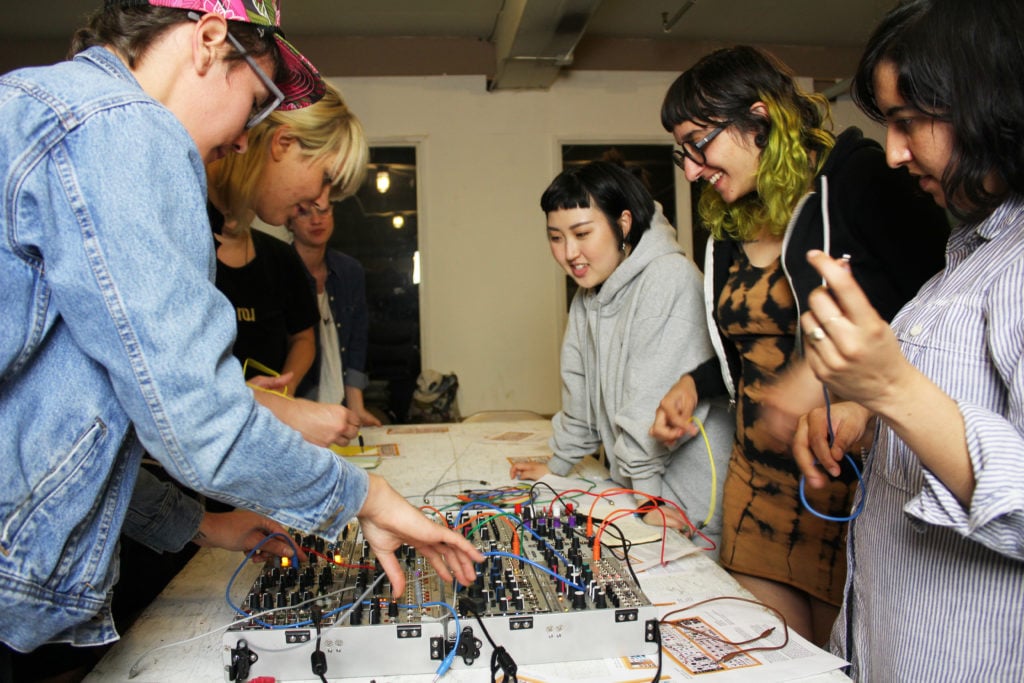
From Little Rock to Cincinnati, here are some exciting initiatives that may still be beneath the radar.

Sean J. Patrick Carney

Living in major art cities like New York, Los Angeles, or even Chicago certainly has its benefits. Things move more quickly, opportunities are more regular, and the concentration of people with similar interests and politics makes community-building that much easier. Unfortunately, it’s also expensive to live in those place and hard to make a splash with so much competition. It makes good sense that younger artists are deeply ambivalent about choosing between moving to Brooklyn or doubling-down in Denver.
Over the last couple of years, I’ve grown interested in projects that are happening outside of the big three art cities, projects run by younger artists in places where overhead is lower. Many of these are collectively run or volunteer-based. They rarely factor art market trends into their experimental programs. They’ve got a sense of regional pride and are eager to connect with their communities. They aren’t aiming to become empires, and they rarely know how long they’ll last.
Who, right now, is taking advantage of their unique geographical locations and existing communities? Here is a small, but inspiring, selection.
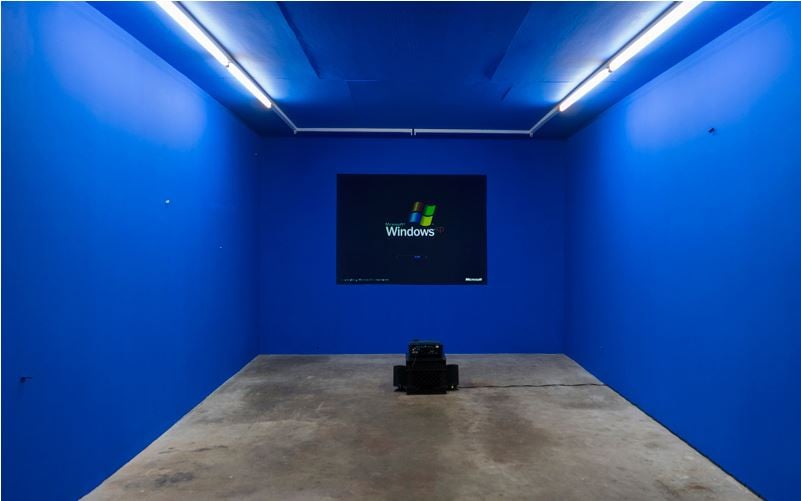
Installation view of Sondra Perry’s “netherrrrrr” at Good Weather. Image courtesy Good Weather.
After finishing his MFA at Cranbrook, artist and designer Haynes Riley returned to his hometown of North Little Rock in 2011. In his older brother Zachary’s single-car garage, he launched Good Weather with a 2012 solo exhibition by Texas-based artist Tony Garbarini.
Good Weather is truly a family affair: Riley’s mother and father prepare food and drinks for the openings; his twin brother and sister welcome guests and shoot photos; his other sister, Erin, is the associate director; Zachary plays host; and his youngest brother is the de facto preparator. Riley funds the gallery out-of-pocket, using income from his design career and teaching to run this ambitious anomaly in the Suburban South.
Despite its ostensibly remote location, Good Weather has worked with an impressive list of artists including Sondra Perry, Dylan Spaysky, Tony Hope, and Fin Simonetti. Over five years, Riley has presented 34 solo exhibitions, nine projects in other cities, and brought the work of his artists to seven different art fairs including Material Art Fair in Mexico City and both NADA’s New York and Miami Beach editions.
This fall features solo shows from Guy Church and Mariel Capanna, plus participation in the SUNDAY Art Fair in London.
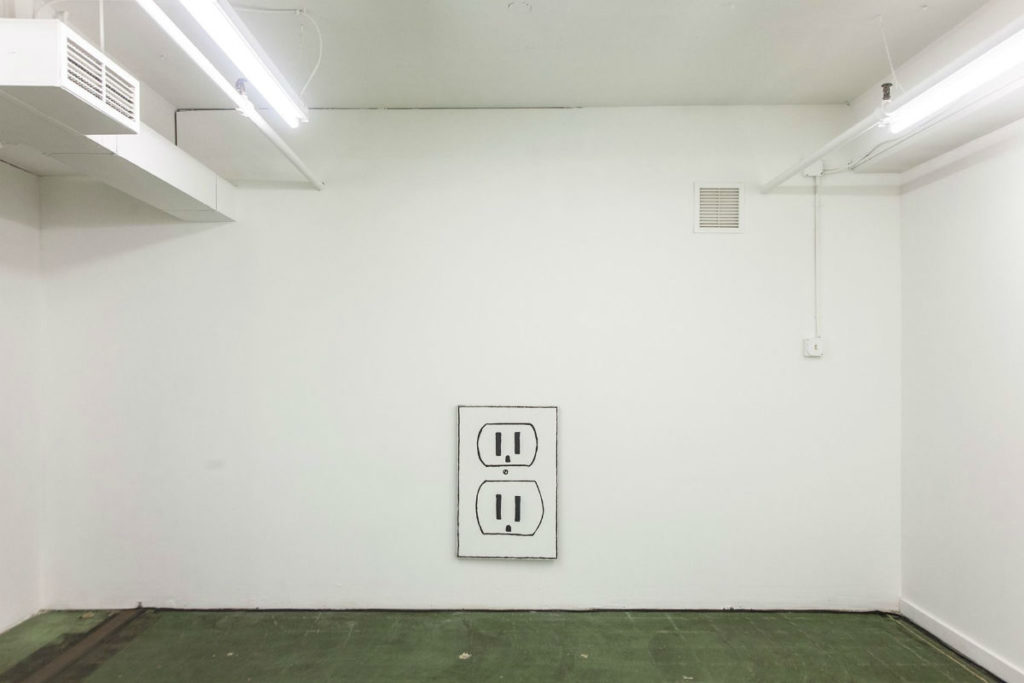
Eric Mast’s “The Scenario of Work” at S1. Image courtesy S1.
Portland isn’t exactly an unheard-of place to live as an artist in 2017, but Felisha Ledesma and Alex Ian Smith, co-founders of the project and community space known as S1, understand that the city’s growing reputation as an art hub hasn’t benefited everyone. The skyrocketing rents in the city have imperiled the house venues and warehouse galleries for which it was once known, leaving a lot of artists without a space to gather and share their work. So in 2014, they opened up in the basement of a Rite-Aid in Portland’s Hollywood District with a mission to create a space for underrepresented artists.
Now located a couple miles east on the same road, S1, a nonprofit organization, is entirely volunteer-run. A membership program, beginning at as little as $5 per month, gives members access to their synth library and free tickets to workshops and events. It also helps to offset costs for the space. Individual giving and the occasional successful grant proposal rounds out the rest.
S1 doesn’t process sales for its artists, and relies on the support of the community it has fostered to keep things running. Highlights from the last couple of years include projects by sidony o’neal and Oakland sound artist Russell E. L. Butler. Their fall program is packed to the gills; just take a look at September alone on their website.
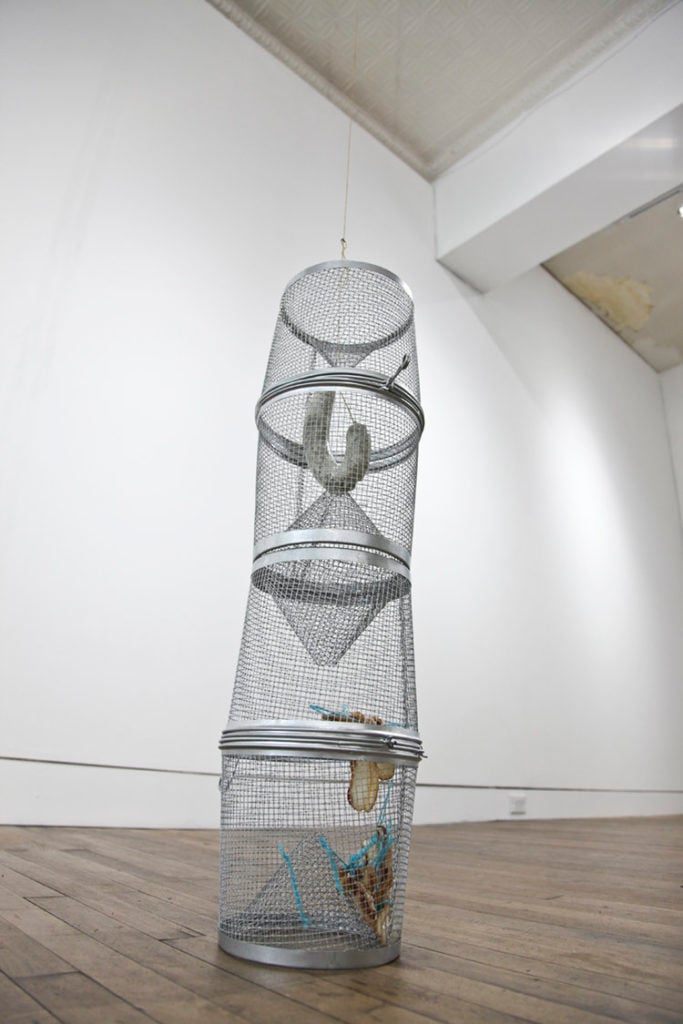
Derek Tyler Franklin’s “standing around waiting to inhale” at Anytime Dept. Image courtesy Anytime Dept.
Artists Rebecca Steele and Lydia Rosenberg met in Portland, Oregon, but several years later reconnected after they’d independently relocated to Cincinnati. Hungry to bring artists they’d befriended over the years into conversation with their new home, they recently established the gallery Anytime Dept. on Cincinnati’s Northside.
Though it is the youngest of the spaces listed here, it has already demonstrated a commanding vision, opening in late June with a solo exhibition by Portland’s Derek Tyler Franklin, followed by a two-person show with Jodie Cavalier and James Maurelle. Upcoming two-person shows include Annie Zverina and Thomas J. Gamble in September, followed by Laura Bernstein and Daniel J. Glendening in October. In collaboration with the Contemporary Art Center, they’re presenting a performance in November of work by Lu Yim and sidony o’neal (mentioned above, at S1).
The space’s generous landlords (both are artists) allow Steele and Rosenberg to focus on presenting challenging work without bending to market trends or concerns. Though still acclimating to their new digs, they’ve made a concerted effort to connect the artists they show with the Cincinnati community. Every show kicks off with a big dinner hosted in a neighboring space, and they produce talks, events, and performances during shows in collaboration with a group of local artists, poets, designers, and academics affectionately referred to as “The Committee.”
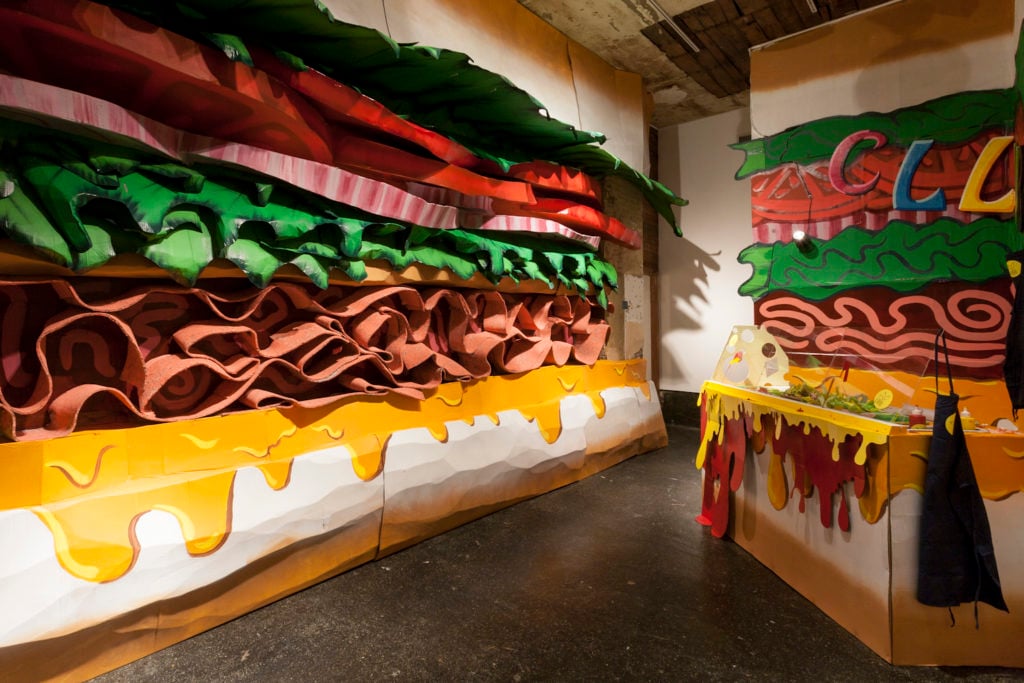
Mass Gallery from Austin, Texas’s “exchange exhibition” at The Front in New Orleans, 2015. Photo: Jonathan Traviesa.
After Hurricane Katrina, many artists in New Orleans scrambled to rekindle grassroots optimism in their community. In the Bywater neighborhood along the Mississippi River, a number of artist-run spaces popped up, one of which was the collectively organized gallery space known as The Front.
It’s comprised of 18 individual “members” who, over two-year cycles, each contribute monthly towards overhead costs like rent, utilities, and insurance. Everyone plays a distinct role, from “beer czar” to “closet organizer” to “landscaper.”
Biannually, each member gets all four rooms of the gallery to exhibit his or her own work, curate an exhibition, or produce programming. The collective takes no percentage of sales from any member’s projects. Their landlord is a former member.
In addition to showing its members’ work, The Front curates “exchange exhibitions” with other collectives. In 2015, they presented work by members of the artist-run space Mass Gallery from Austin, Texas. Within each two-year cycle they produce an exchange with one regional, one national, and one international artist-run gallery.
Such robust programming is further enriched by an annual open call film festival, regular artist talks, performances, and other programming. It’s a complex model, to be sure, but like the big band mentality integral to New Orleans’s musical history, The Front incorporates many players to produce a singular, infectious voice.
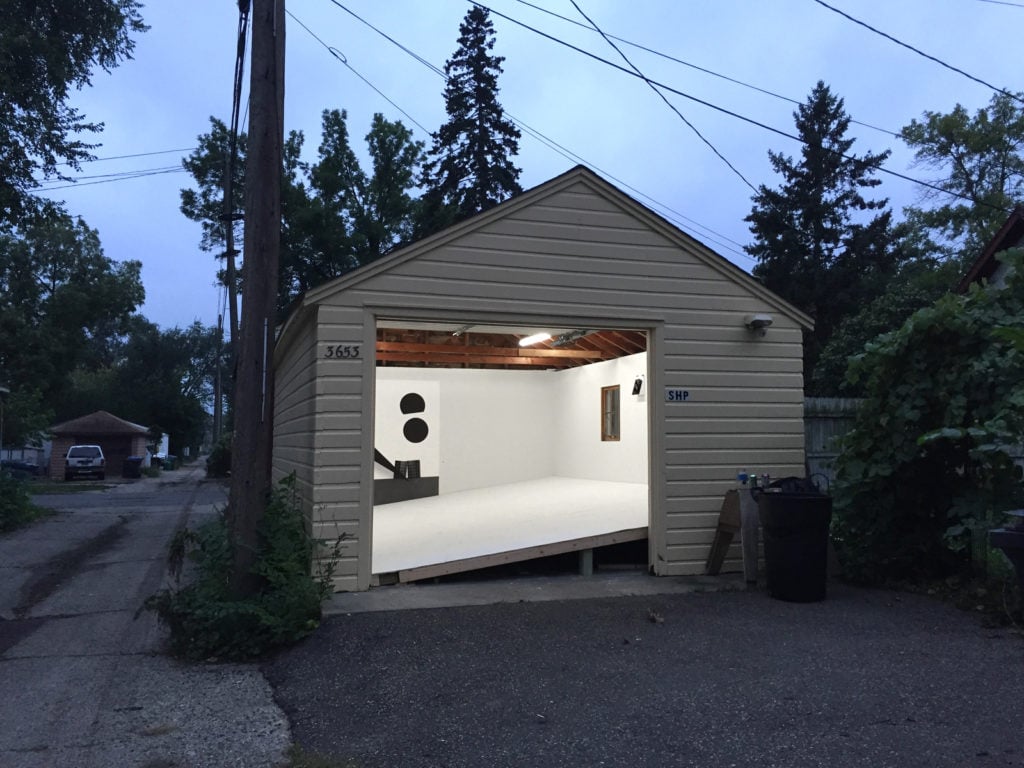
Brittany Nelson, Monuments to the Conquerors of Space (2016). Photo courtesy of the artist and Sadie Halie Projects.
Originally launched in 2012 by Jennie Ekstrand and Patrick Gantert in their apartment living room and then their building’s garage in the Sunset Park neighborhood of Brooklyn, Sadie Halie Projects relocated to Minneapolis and reopened in their new garage in 2016. Nicole Killian, an artist, graphic designer, and faculty member at Virginia Commonwealth University in Richmond, is their third member, responsible for all of the gallery’s design.
For years, Sadie Halie Projects was a completely out-of-pocket endeavor. Gantert, Ekstrand, and Killian volunteered their labor, and the artists they worked with understood the framework of showing with a scrappy space. While in Brooklyn, they presented exhibitions by artists included Willie Wayne Smith, Alyse Ronayne, and Carlos Rosales Silva. The move to Minneapolis hasn’t diluted their program, and has ultimately proved to be a smart one. Upon arrival, local spaces like Midway Contemporary Art, Yeah Maybe, Hair and Nails, and The White Page reached out immediately to connect.
They received fiscal support for the 2016-17 year through the Visual Arts Fund, a granting program linked to the Andy Warhol Foundation, which has allowed them to pay the artists that they show. Upcoming shows with New York-based artists Leah Guadagnoli and Sonia Louise Davis will link their former community with their new one.